The Salt and the Women
Stochastic resonance & generative cinema
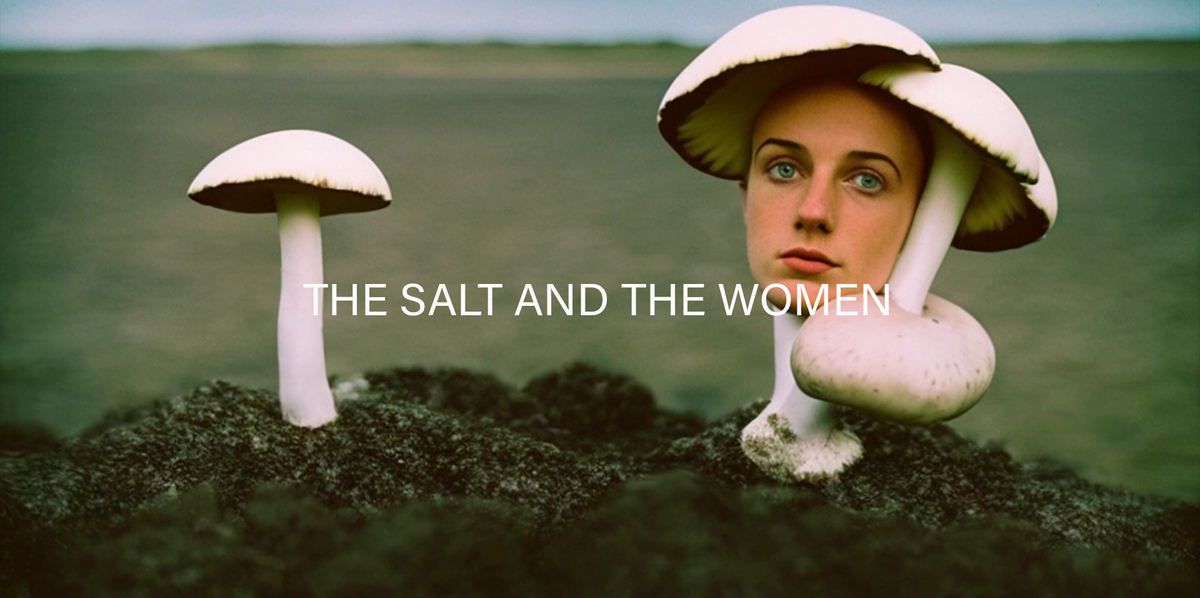
With all the interest in films that don’t exist, I decided to make one that does.
The Salt and the Women uses AI tools in ways that embrace their limitations to tell a story. It reconnects what had become two divergent strands of my thinking: AI, and mushrooms.
What started as a series of generated images of mushrooms and wiring was given a narrative through GPT3. I asked a series of questions about these scenes, generating new images, and asking more questions. It was scored by mushrooms collaborating with a synthesizer.
Working with AI means you can see themes emerge and steer them. As opposed to the ask-and-receive dynamic of pure AI image generation, something more complex arises from the interaction of images, text, and music. I didn’t attempt to remove myself from this process, but to steer my way through it.
The result of these prompts is a short, highly experimental film about women connecting with mushrooms and machines through a cybernetic ritual. The text, read aloud by Amy (UK) through a text-to-speech program, speaks of watching the generated imagery as if it took place on the sand in front of her. The women of the story, like their uncanny-valley dwelling counterparts in the images, are constantly confused for papier mache and wax. Mushrooms and bodies and wires become tightly entangled. The pulse of motion between images suggests something organic, like breathing or the waves, but with a mechanical stutter and jankyness. Sudden shifts, visual noise and peaceful pauses come forward as new “rituals” emerge on the shore.
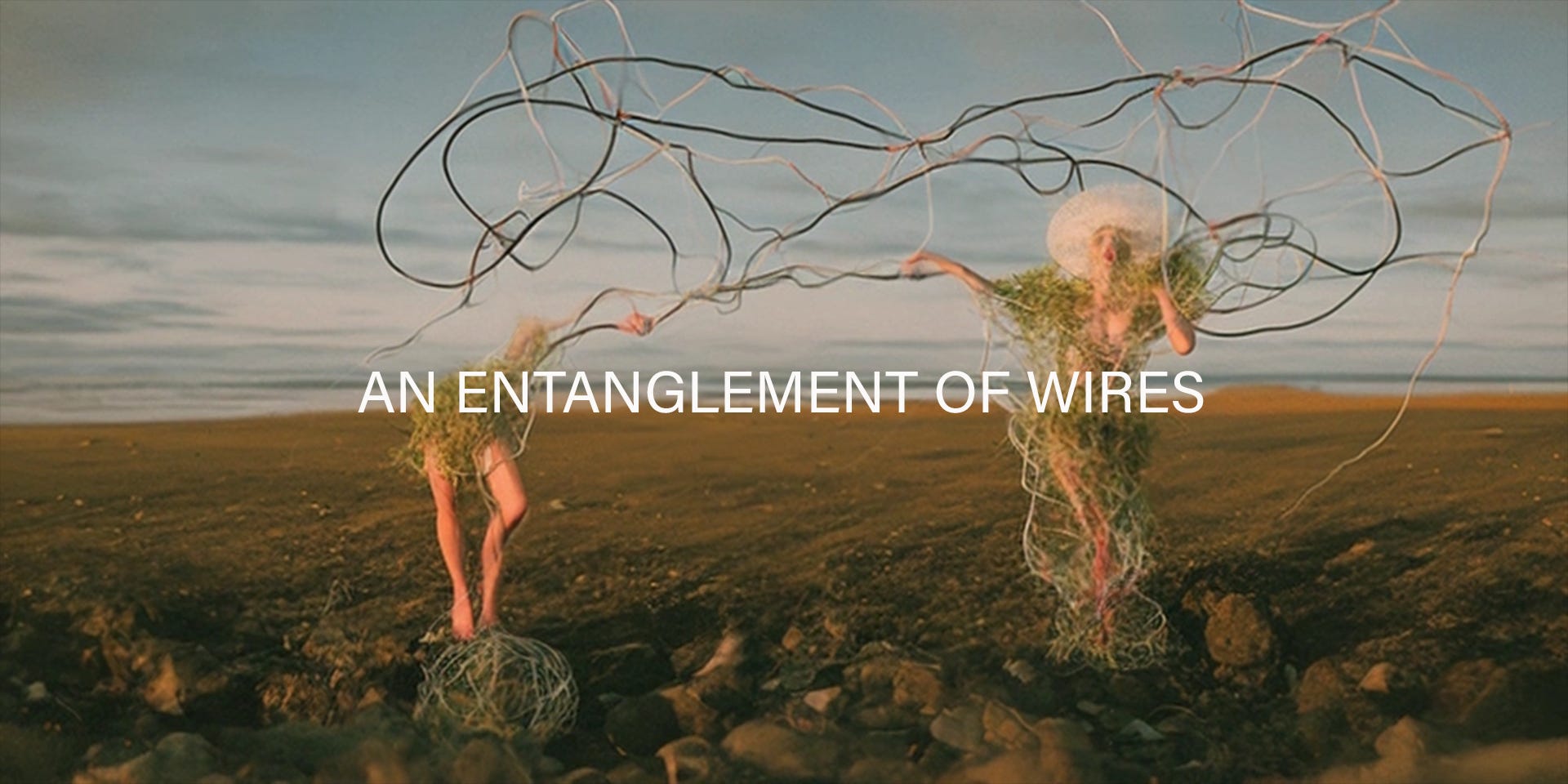
The scenes GPT3 describes bear a resemblance to the “latent space” of Stable Diffusion’s conjured images.
Each image in this film, we are told, is a failed attempt at a ritual by non-existent women hoping to transcend one world for another. This ritual involves the fusion of digital and analog information streams — mushrooms and computers — but also the bending of bodies into contorted, inhuman arrangements. Through these contortions of bodies into cyborganic postures, the body is meant to enter a symbiotic network.
Each failure breaks the scene into ribbons, like threads grasping at the next arrangement. Using AI interpolation to move from one series of images to the next, we see the new “glitch” or “noise” state of AI images when that information strays too far from the patterns. It looks like the scene is melting or being devoured by mushrooms: a happy coincidence of how these systems piece images together, finding connections like the wandering hyphae of a mycelial network.
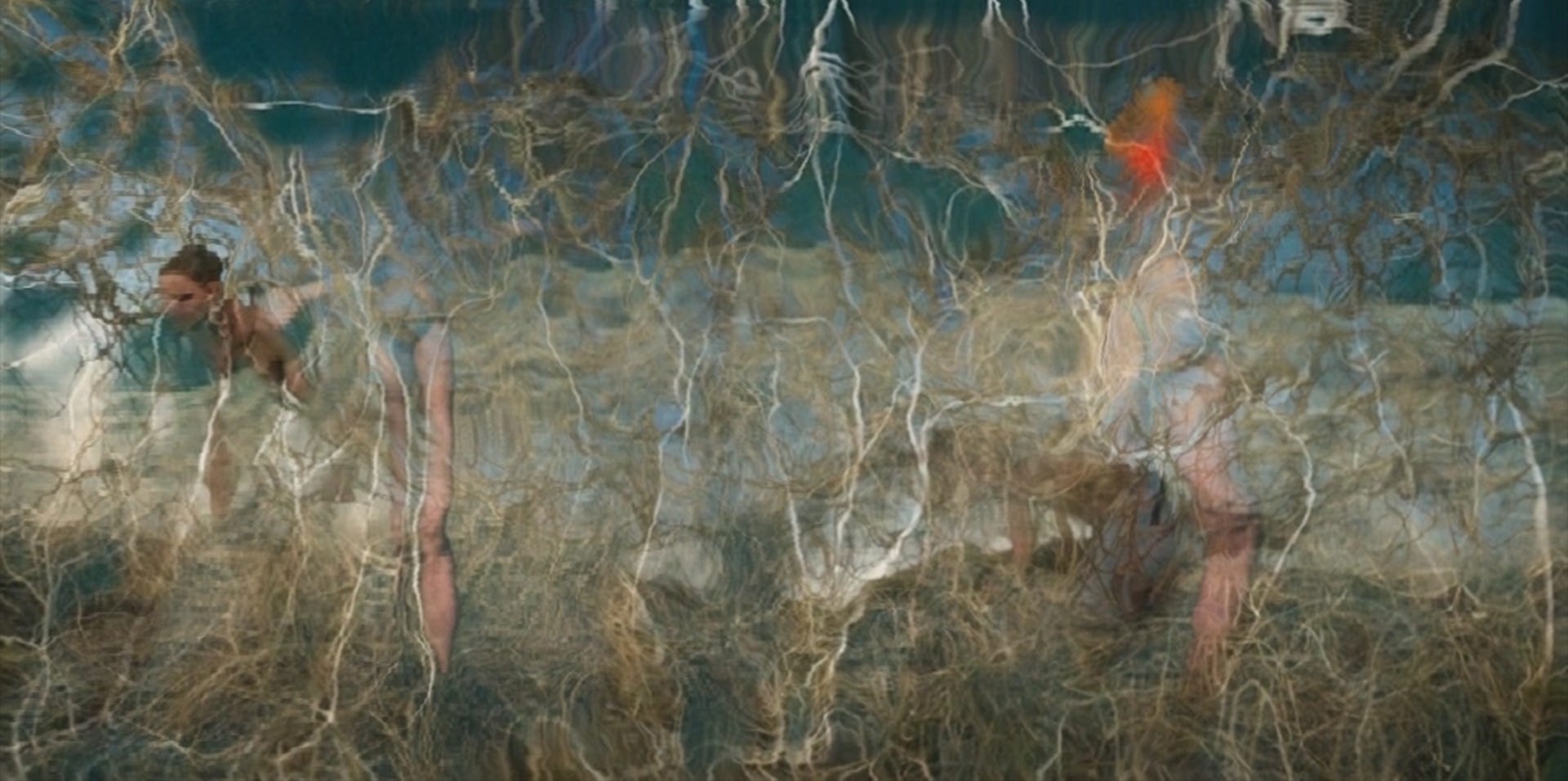
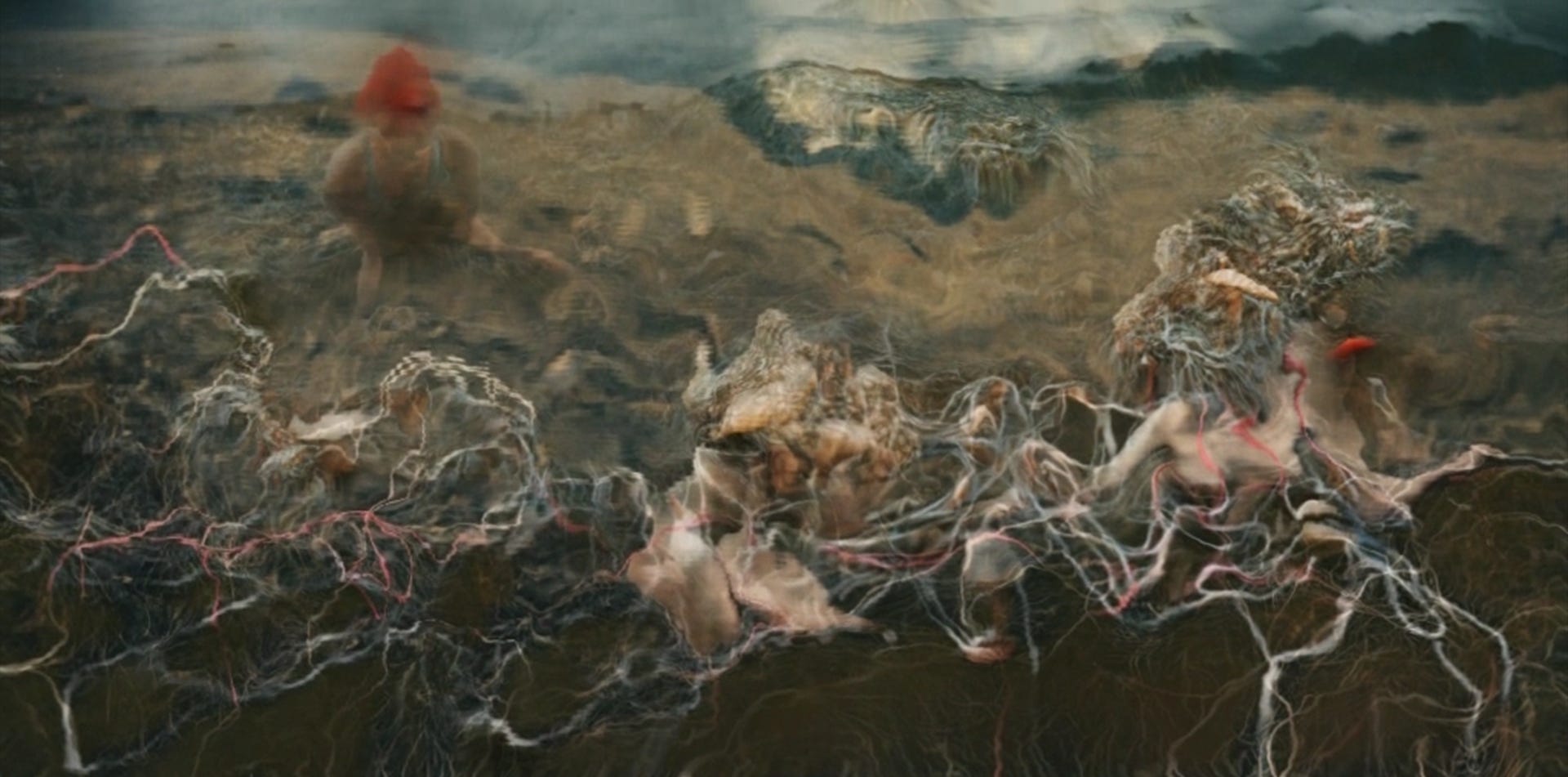
We watch a pulsing series of images cycle through possibilities. Each scene is a failure at making the women of the dataset real. We know that the women of AI generated landscapes “don’t exist,” but the women in the training data do. Who cares to reconcile that arrangement? The AI women, generated like ghosts from the real bodies of the dataset? Or real women seeking to escape the datafication of those bodies?
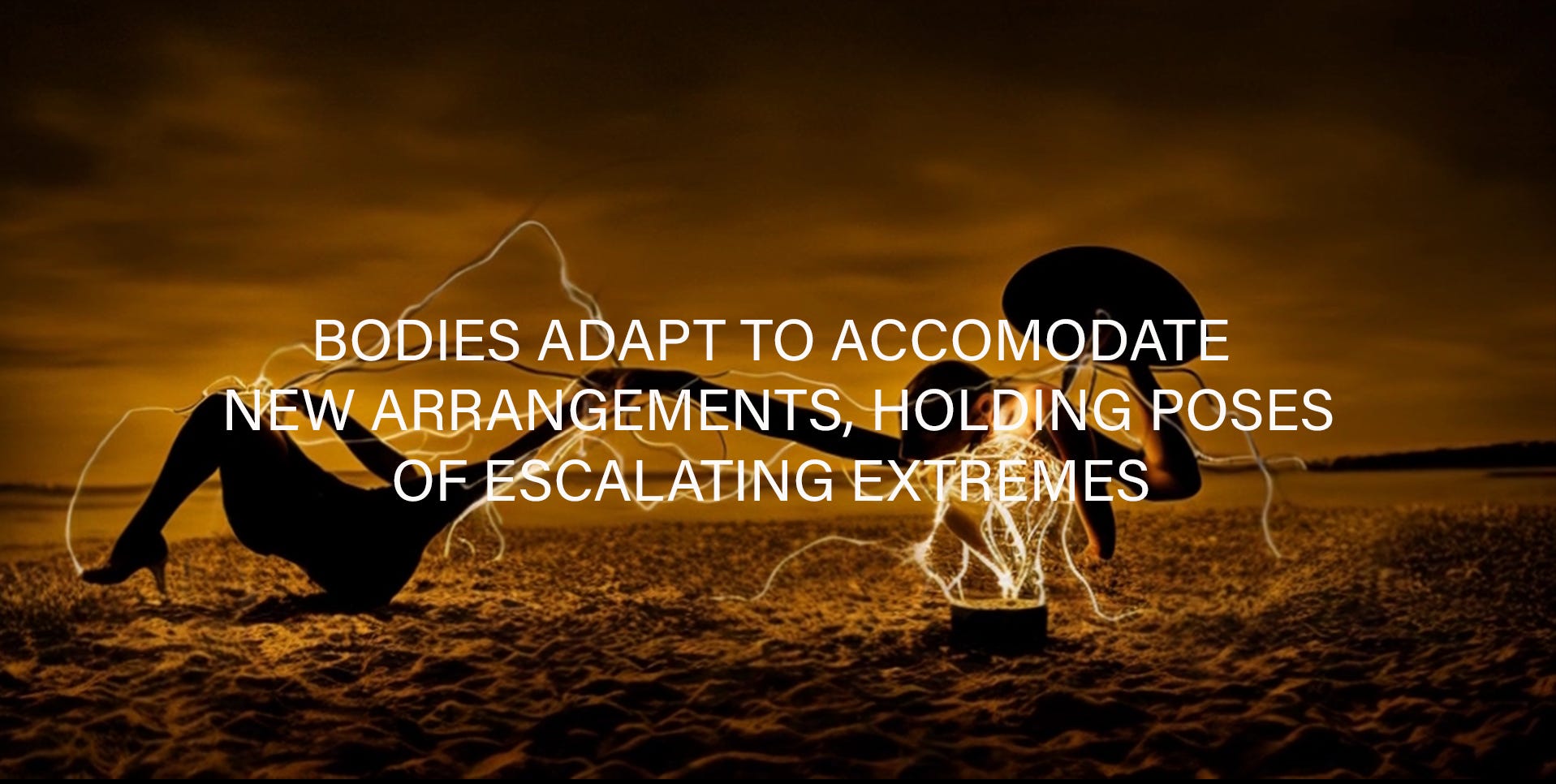
Every woman an AI dataset produces tends to be either unrealistically beautiful — rendered from celebrities and fashion models— or completely illegible: smudged and smeared like thumbprints on a painted portrait. Bodies are a notoriously disconnected assemblages of parts, or sexualized images learned from pornographic material, which is then censored. This film is about the latent space - the “possibilities of possibility” - and the weight of constraint by the underlying dataset. We can generate anything you want, as long as it’s been imagined before.
In the end the ritual fades away and we, the viewers on the real side the screen, join the AI narrator watching a mushroom. The glimmer of a human hand emerges from the nest of wires and sticks.
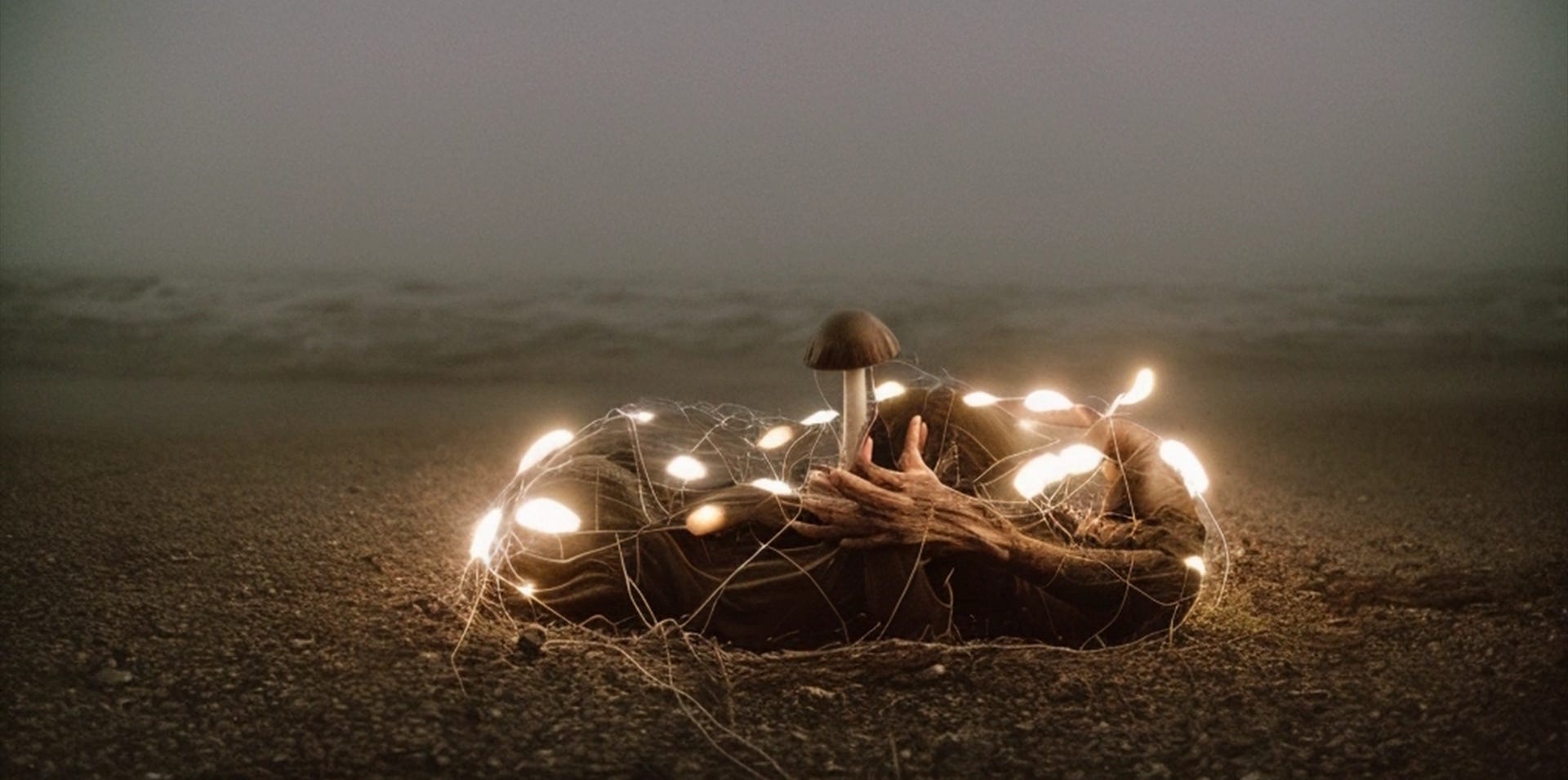
AI images are inherently about the information they learn from, as if ripped apart from the real world and operating in a closed space. I was excited to tell a story that reversed that relationship, however abstract it was. It’s a story about the impossibility of breaking in or out of those systems, given the way they are designed.
On one layer this is a story - perhaps better to say a poem — about women on a beach creating strange combinations of machines and natural systems, contorting themselves to adapt to the demands of each new machine, all in the hope of finding ways to enter more intimately into those systems. In another interpretation, it’s a story about data and what it represents, posing questions about that data moving into the real world and the distortions that occur along the way.
Or perhaps it’s all a mountain of nonsense. Working with AI tools to create work in this way is all about interpretation. I am trying to understand and project meaning onto images and texts. Asking GPT3 questions infers the meanings I want to find, and it offers me answers in response. AI is as much a cultural and psychological system, encoded as a system of text and image weights.
Layer these systems together and you create opportunities for stochastic resonance, in which noise aligns in ways that amplify the signal. The direct output of an AI system is one of categorization and assignment. Pair these systems together, however, and a human artist can pair them together to activate meanings that may otherwise not be present. This is simple semiotics, really: place two objects beside each other and you create a new story. What changes is the technology and its affordances and how we, as artists, decide to use them.
AI images and text are a kind of noise disguised as signal: they don’t say anything precise, leaving room for interpretation. Poetry is also about the distance words have from precise meanings, but what steers those meanings are authorial intent: maybe emotional resonance.
With text generation the words don’t convey that intent directly. A human using these tools uses intent to shape something out of those words. The words suggest intent, through selection and arrangement, but could still be illegible to a viewer.
Pair that text with another system that works the same way — image synthesis — and you replace emotional resonance with stochastic resonance, a process where noise generators, in combination, amplify a signal — in other words: the images and the words don’t need to have any relationship to one another or express anything, because AI has nothing to express, but by combining them, the author can amplify the intended meaning of both, in ways that make these “stories” more legible.
The film is experimental, the words and images loosely connected, so I crafted a story about navigating that noise. They occasionally come together in ways that imply richness or at least, an invitation for the viewer to project richness into the interactions of images, words and sound.
The navigation of these affordances is, in some poetically removed way, the same as one’s escape from the confines of datafication, categorization. These texts and images speak to the elusive, probably impossible dream of fusing fluid experience with the binary logic of machinery: “the infinite struggle between bodies and information, identity and presence, technology and ritual, understanding and unknowing.”
You can watch the film on the link below.
Thank you for reading! Please share and link as you like: word of mouth is how Cybernetic Forests grow. You can follow me on Twitter, Mastodon, or Instagram.
If you like this newsletter, please subscribe! If you like it a *lot*, consider supporting my independent arts-driven research with a paid subscription. Either way, thanks!





